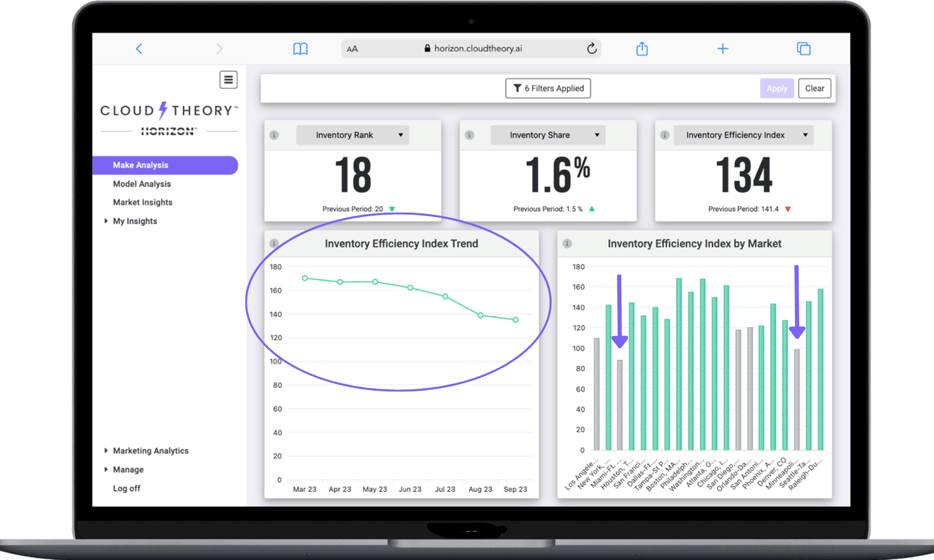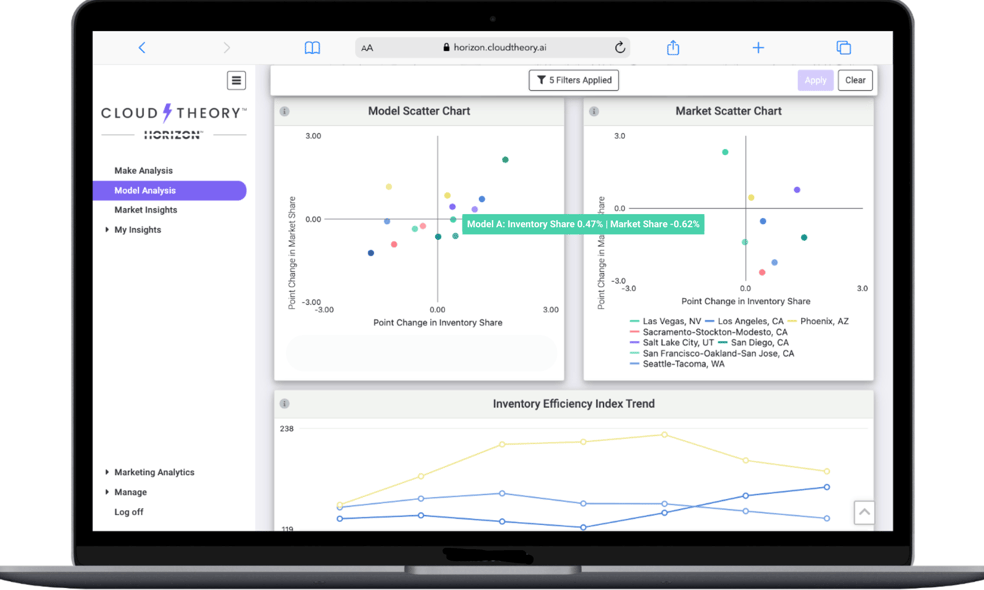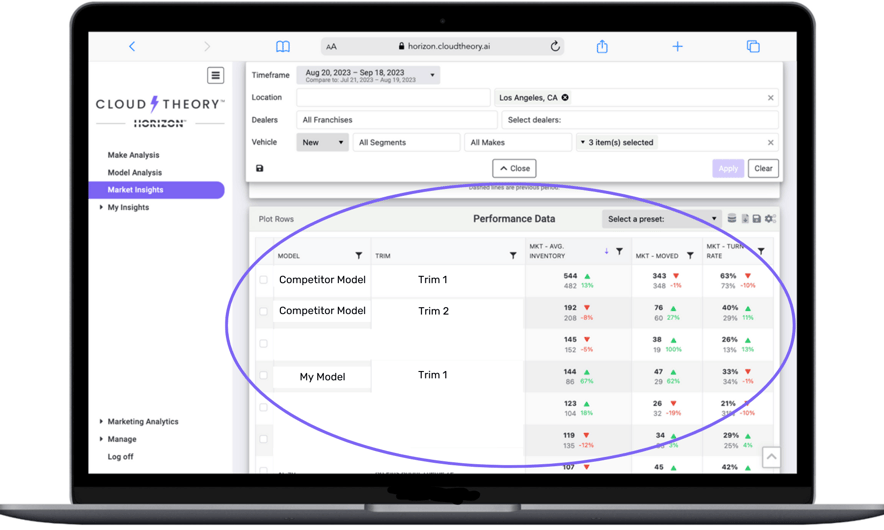Cloud Theory’s Horizon Platform Enables OEMs to Challenge Competitors Effectively by Uncovering Opportunities and Vulnerabilities
In past blog posts, we have focused on how Cloud Theory’s Horizon platform informs an OEM of its overall brand health and identifies models or markets that need help bringing relative demand into better balance with relative supply. Allocating marketing or incentive dollars to models and markets with a lot of slow-moving inventory is a great way for OEMs to act upon the insights contained within Horizon.
But there is another set of valuable decisions that are enabled using this platform—and all it takes is a change of perspective rather than a different set of data or analysis approach. Instead of using Horizon to make decisions about an OEM’s own make or models, uncovering the vulnerabilities of competitive makes and models informs choices about what to target, where to do so, and how to take the best action.
Using Data to Act Accordingly
As an example of this, the screenshot below shows a make that still has a strong Inventory Efficiency Index (134) but is starting to show some degradation on that metric (down from 170 in March). Additionally, markets such as Miami and Minneapolis have IEI scores below 100, indicating markets of vulnerability and, therefore, opportunity.

A competitor of this brand can—and should—take note of these insights and act accordingly, whether challenging it via advertising, incentive support, inventory reallocation, or some combination of those actions.
Diving deeper, it is apparent that “Model A” for that competitive make is vulnerable in the West —gaining in Inventory Share (+0.47 points) but losing in Market Share (-0.62 points). In other words, that model is doing less with more. The markets driving that outcome are Los Angeles, Sacramento, San Diego, and Seattle. Any competitor of this model and with inventory in those markets should be stepping on the gas to take advantage of this circumstance, and the ones that recognize it and act upon it quickly will have a leg up. All OEMs know most everything there is to know about their own makes and models, but most need a real-time read on what is going on around them so they can act quickly to target the right competitors in the right places. That is the true power of the Horizon platform.

But wait, there’s more.
Context is Key
The Horizon platform can even identify trim-level vulnerabilities in given markets, as demonstrated by the example in the Los Angeles DMA below. In this case, “Trim 1” for competitive “Model A”, which has far and away the most inventory in this market, is gaining in supply (+13% MoM) but losing slightly in terms of Vehicle Movement (-1%). As a result, Turn Rate for this trim is down 10 points. Meanwhile, its “Trim 2” is gaining in Vehicle Movement despite a declining inventory position, resulting in an 11 point gain in Turn Rate. It is starkly obvious which vehicle offering is the weak leak in the competitive chain and therefore represents the biggest opportunity for “My Model’s Trim 1”, which is growing in both supply and demand.

Having competitive insight changes the nature of decision making from an inward-facing and insular view to an outward-facing and contextual one. By looking through the competitive lens, OEMs can quickly and clearly identify who is vulnerable, where they are vulnerable, and how to best take advantage of those vulnerabilities.
Said another way and in the words of American painter Kenneth Noland, “Context is the key – from that comes the understanding of everything.”
About Cloud Theory’s Inventory Efficiency Index
An integral component of Horizon is Cloud Theory’s patent-pending Inventory Efficiency Index (IEI), which provides a previously unavailable real-time view of market-relevant supply and demand of all makes and models across all geographies. Key decision-makers can use the IEI to confidently allocate valuable marketing and incentive dollars to locations requiring a boost in demand or reallocate vehicles to locations that are moving inventory more efficiently. Cloud Theory's Inventory Efficiency Index assigns scores to vehicle makes based on current active inventory and sales data compared to competitors.
- A score of 100 means that an OEM's demand is in balance with its relative supply in the marketplace.
- A score above 100 indicates that a make or model is selling its inventory more efficiently than average.
- A score below 100 means that there are opportunities to bring demand into better alignment with supply (or vice versa).

.png?width=500&height=500&name=Untitled%20design%20(12).png)


